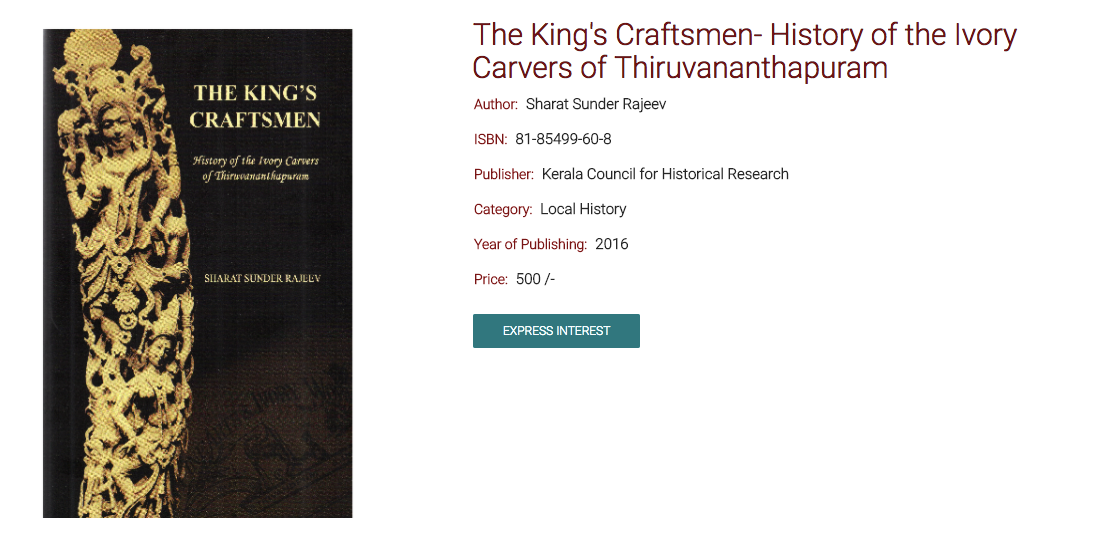This fantastic book by Sharat Sunder Rajeev is a historical treasure trove on the ivory artists of Travancore and their families. Information meticulously collected from the descendants of the artists' families makes it a valuable contribution to the nascent study of South Indian artists, about whom we know very little at present. Sharat's project is definitely a labor of love. It is also one of the few books on Kerala that critically examines oral histories and contextualizes it with both visual and textual historical information. This is a must-read for anyone interested in Kerala's subaltern history, art history, or generally, on craft.
(More detailed review forthcoming!)
Book available via mail from Kerala Council for Historical Research, Thiruvananthapuram. See link.
Sebastian Joesph's work brings together geography, geopolitics, and sociology to study in detail the forest conservation policies (or lack thereof) in Cochin the nineteenth and twentieth centuries. Sourcing information from archival records gathered from Kerala state archives, Joseph underpins his argument about the depletion of Cochin forests by the British as a form of ecological imperialism made possible by new technology -- the tramway. Joseph crucially connects the conservation efforts and failures in Cochin to the larger British colonial ecological practice across South Asia giving the reader a clear picture of what was at stake.
Book available via multiple online outlets and in stores.

